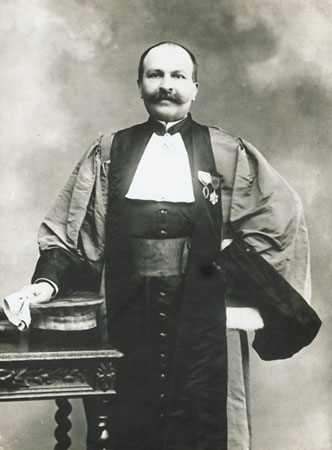<Back to Index>
- Chemist Paul Sabatier, 1854
- Painter Washington Allston, 1779
- Khan of the Mongol Empire Mahmud Ghazan, 1271
PAGE SPONSOR

Paul Sabatier (November 5, 1854 – August 14, 1941) was a French chemist, born at Carcassonne. He taught science classes most of his life before he became Dean of the Faculty of Science in 1905.
Sabatier's earliest research concerned the thermochemistry of sulfur and metallic sulfates, the subject for the thesis leading to his doctorate. In Toulouse, he continued his physical and chemical investigations of sulfides, chlorides, chromates and copper compounds. He also studied the oxides of nitrogen and nitrosodisulfonic acid and its salts and carried out fundamental research on partition coefficients and absorption spectra.
Sabatier greatly facilitated the industrial use of hydrogenation. In 1897, he discovered that the introduction of a trace of nickel as a catalyst facilitated the addition of hydrogen to molecules of carbon compounds.
Sabatier is best known for the Sabatier process and his works such as La Catalyse en Chimie Orgarnique (Catalysis in organic chemistry) which was published in 1913. He won the Nobel Prize in Chemistry jointly with fellow Frenchman Victor Grignard in 1912. He is also known for the Sabatier principle of catalysis.
Sabatier was married with four daughters, one of whom wed the famous Italian chemist Emilio Pomilio.
The Paul Sabatier University in Toulouse is named in honor of Paul Sabatier. Paul Sabatier was a co-founder of the Annales de la Faculté des Sciences de Toulouse, together with the mathematician Thomas Joannes Stieltjes.